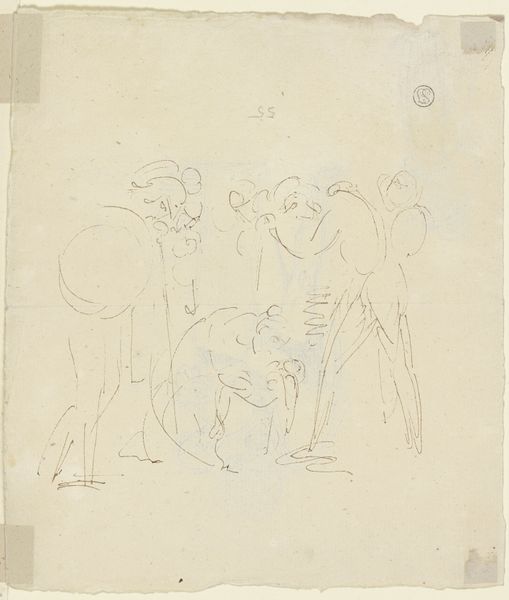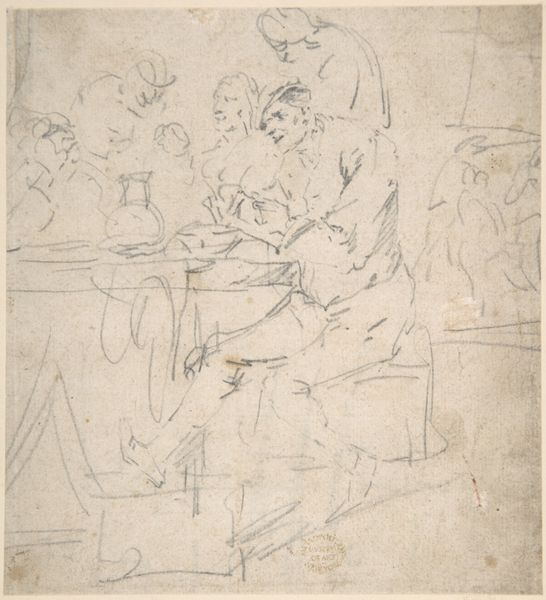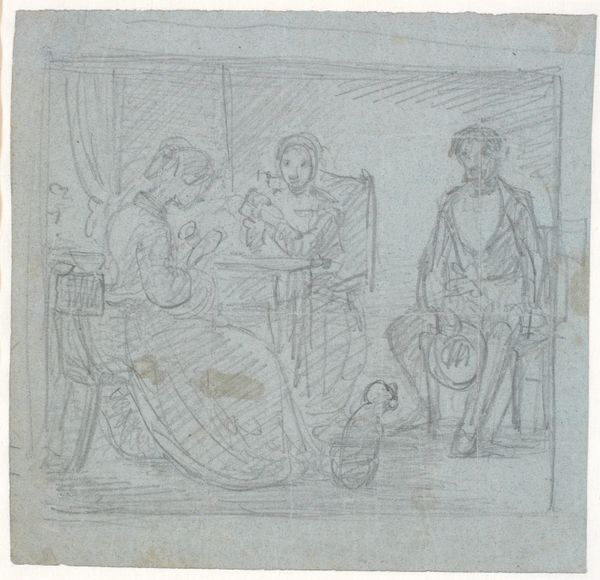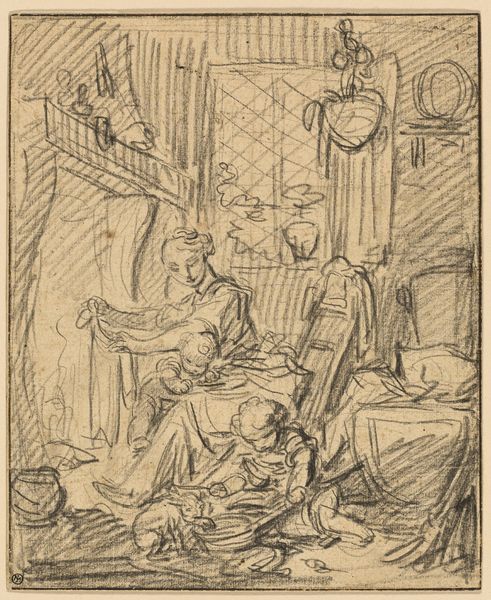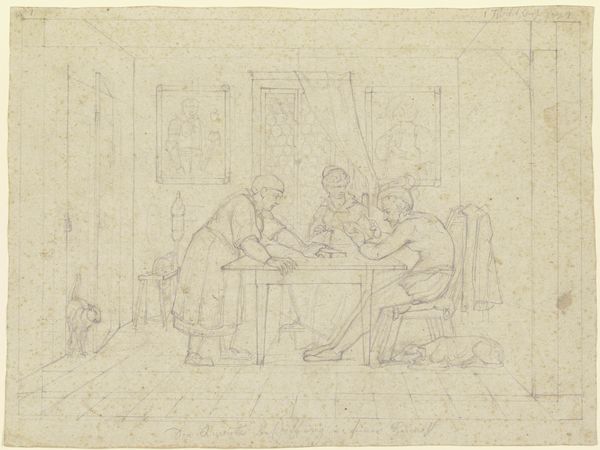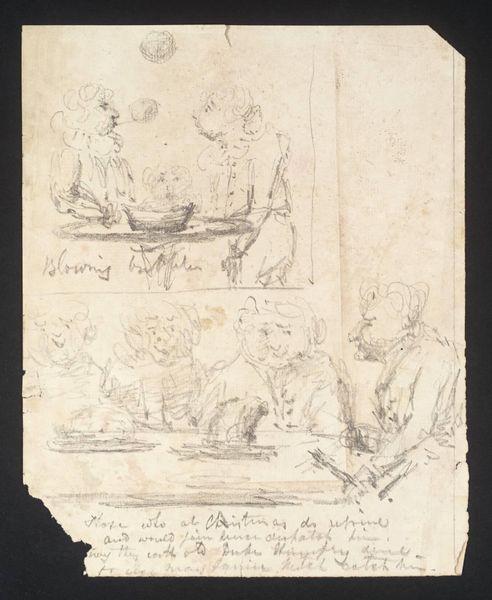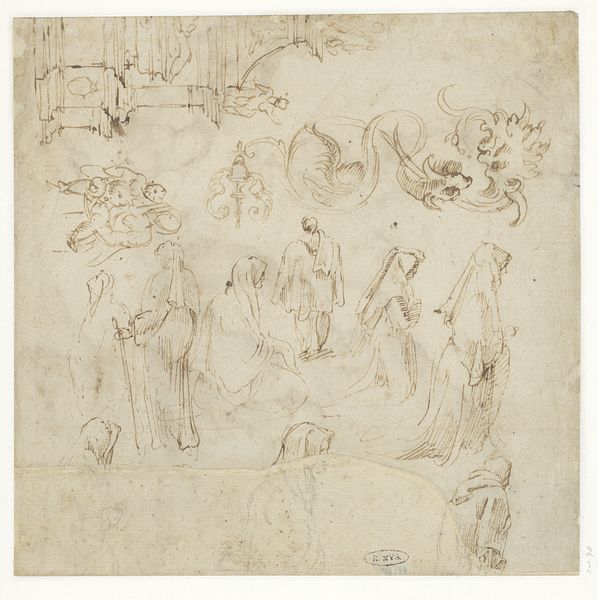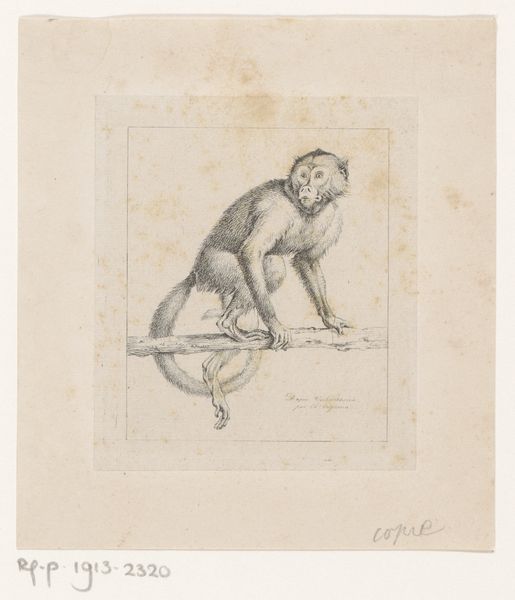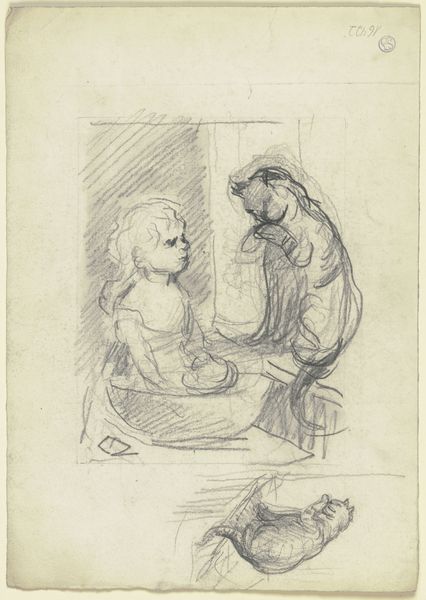
drawing, paper
#
portrait
#
drawing
#
caricature
#
paper
#
genre-painting
#
realism
Copyright: Public Domain
Editor: This is Otto Scholderer's drawing, "Child at the dining table with cat," from around 1872 to 1874. It's a simple pencil sketch on paper, very intimate. I find the composition intriguing; it's all lines and implied forms, enclosed in a circle. What do you see in this piece, beyond just a child and a cat? Curator: Beyond the surface, I see a reflection of bourgeois values and anxieties. Consider the context: Germany, post-unification. There's a societal push toward domesticity and idealized family life. Scholderer, a Realist, presents a seemingly ordinary scene. But the child's passive posture and the cat's near anthropomorphic gaze hint at something more complex. Do you think there might be a power dynamic at play? Editor: Power dynamic? Between the child and the cat? Or something more? Curator: More broadly, think about who is present and who is absent. We don't see the parents, the supposed upholders of this domestic sphere. Are we perhaps witnessing a quiet rebellion against prescribed social roles? Is the artist subtly questioning the very domesticity he depicts through this simple interaction of a child and an animal? Editor: That's a really interesting point! I was just seeing it as a simple, cute image. I didn't think about the absence of the parents adding to a broader societal commentary. Curator: Precisely. Realism, in its focus on the everyday, can be incredibly powerful in unveiling the undercurrents of societal norms. And what seems merely a candid glimpse of innocence holds layers of critique when viewed through a critical lens. Editor: I'll definitely look at Realist paintings differently now. Thanks for making me think more critically! Curator: My pleasure. Remember, art is always in conversation with the society that creates it, even when it appears to simply mirror it.
Comments
No comments
Be the first to comment and join the conversation on the ultimate creative platform.

